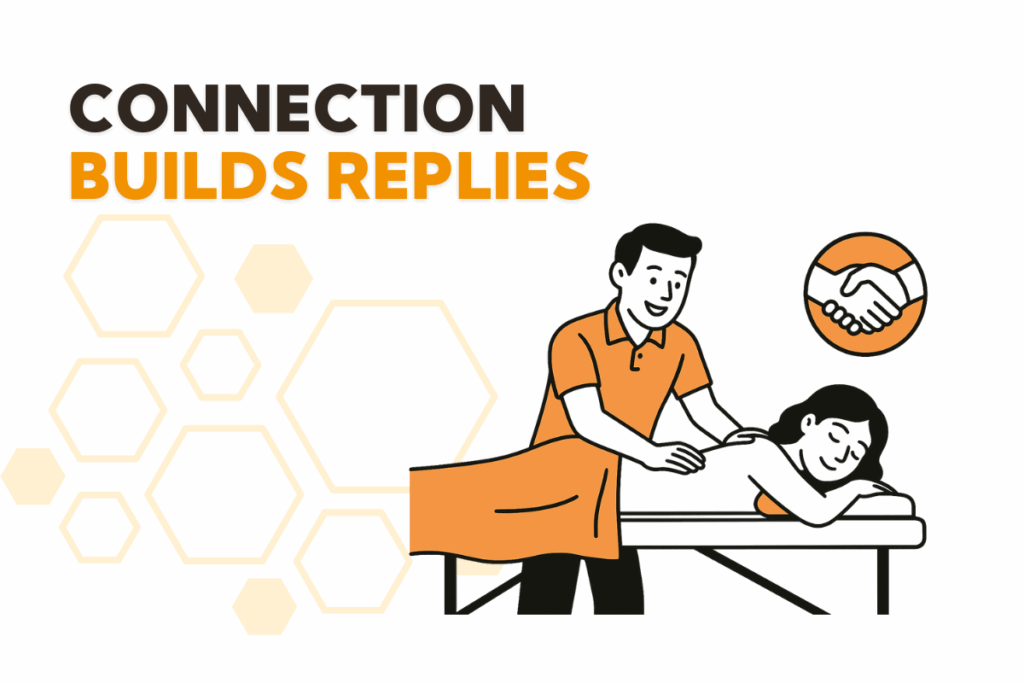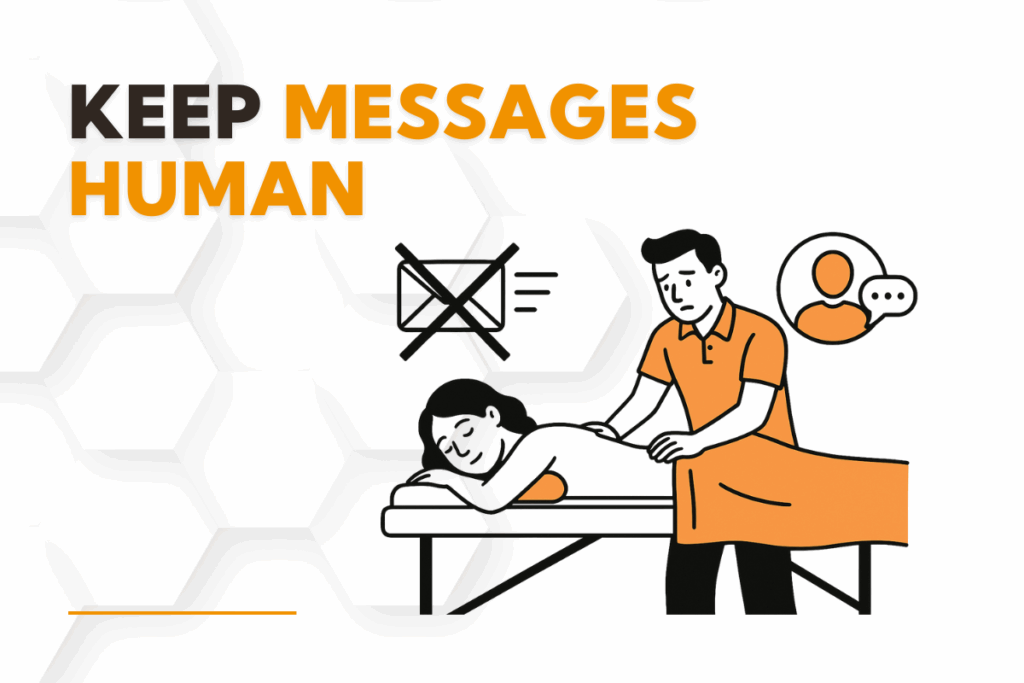If clients don’t respond to automated messages, it can feel like you’re talking into the void. Here’s how to make every reminder personal and effective.
If clients don’t respond to automated messages, you’re not the only one facing this challenge. Many massage clinic owners send confirmations, follow-ups, and rebooking prompts only to receive silence in return. It’s frustrating when your schedule depends on those confirmations but the outreach doesn’t lead to action. In massage therapy, where personal connection is at the core of every session, a cold or generic message can be the difference between a filled appointment book and an empty slot.
Understanding Why Clients Don’t Respond to Automated Messages
Massage therapy is personal work. Clients choose you because of your skill, care, and the trust you build over time. When a message sounds like it’s been generated by a machine instead of written by someone they know, the human connection is lost.
Studies on appointment attendance show that while automation can reduce no-shows, generic messages are far less effective than personalized outreach. If clients don’t respond to automated messages, it’s often because the wording feels one-way, impersonal, and disconnected from the service they value.
In a real clinic example, a wellness center sent “REMINDER: APPT 03/10 2:00 PM” to every client. Some replied, but many ignored it. The problem wasn’t the timing — it was the lack of warmth and context.
Personalizing Automation for Better Engagement
When clients don’t respond to automated messages, adding personal touches can make all the difference. Using a client’s name, the service they booked, and their therapist’s name can make even an automated reminder feel like a genuine check-in.
Including a clear and easy action in the message also helps. Instead of a vague “please confirm,” give them a direct option to confirm, reschedule, or ask a question. Clients are more likely to reply when the next step is obvious.
Matching your written tone to the way you speak in person can also boost engagement. Warm, respectful language works better than abbreviated, robotic text.
Timing Messages to Reduce No-Shows
If clients don’t respond to automated messages, review when they are being sent. Many clinics see strong results from sending one reminder 48 to 72 hours before the appointment and another 24 hours before.
Being specific is equally important. “Your deep tissue massage is tomorrow at 5 PM” is more engaging than “Don’t forget your appointment.” When a client sees exactly what the session is for, they’re reminded of the value they’re receiving.
Offering a two-way communication option gives clients confidence that a human will see their response. Even if the first message is automated, a personal follow-up for those who don’t reply can save the booking.

Creating a Warm Automation Workflow
Segmenting clients allows you to send messages that fit their needs. New clients might need directions and arrival instructions, while long-term clients may only need a quick confirmation option.
Adding relevant context such as the type of service, the therapist’s name, and any notes from the last session helps keep the conversation personal.
Respecting client preferences is another key step. Avoid sending messages late at night, and offer a choice between text and email reminders. Using business process automation for massage clinics can help manage these details without extra manual work.
Choosing the Best Channels and Frequency
If clients don’t respond to automated messages sent by email, try switching to text for confirmations and last-minute changes. Email works best for intake forms, receipts, and follow-up resources.
Over-messaging can lead to clients ignoring future communications, so keep reminders balanced. If there’s no reply within 24 hours of the appointment, try a different channel such as email or a quick phone call.
Writing Microcopy That Encourages Replies
Every reminder should feel like it came from a person. Include the client’s name, reference their booking, offer one simple next step, and sign off with your name or your clinic’s name.
For example: “Hi Jamie, it’s Chris from Willow Therapeutic. Are we still good for your sports massage tomorrow at 4 PM? Reply 1 to confirm or 2 if you need to change.”
Cold, stripped-down reminders like “REMINDER: APPT 04/15 1600. REPLY YES/NO” risk being ignored.
Tracking Results to Improve Engagement
If clients don’t respond to automated messages, track your data to understand why. Monitor reply rates, no-show rates, reschedule completions, and how quickly lapsed clients rebook.
With reporting and analytics for massage clinics, you can see what’s working and test different timing, wording, and personalization approaches for better results.

Bringing Connection Back Into Your Messaging
If clients don’t respond to automated messages, it’s a signal to bring more human warmth into your communication. Automation should support your client relationships, not replace them. Start small by personalizing one reminder today and watch your engagement improve.
FAQs
Generic messages often feel impersonal. Adding names, service details, and a clear next step makes replies more likely.
One or two reminders per appointment work best for most clinics. Too many can cause message fatigue.
Text is ideal for confirmations and urgent updates. Email is better for forms, receipts, and aftercare notes.
Yes. By using client-specific details, a warm tone, and two-way communication, automated reminders can feel just as personal as manual ones.


